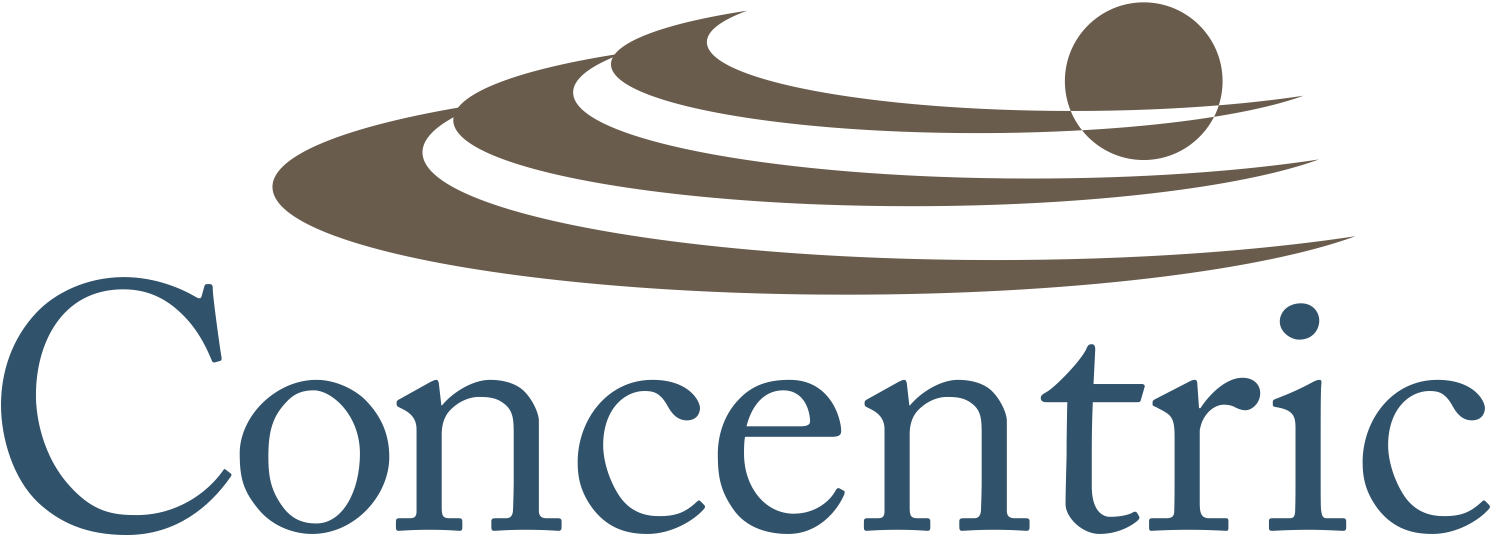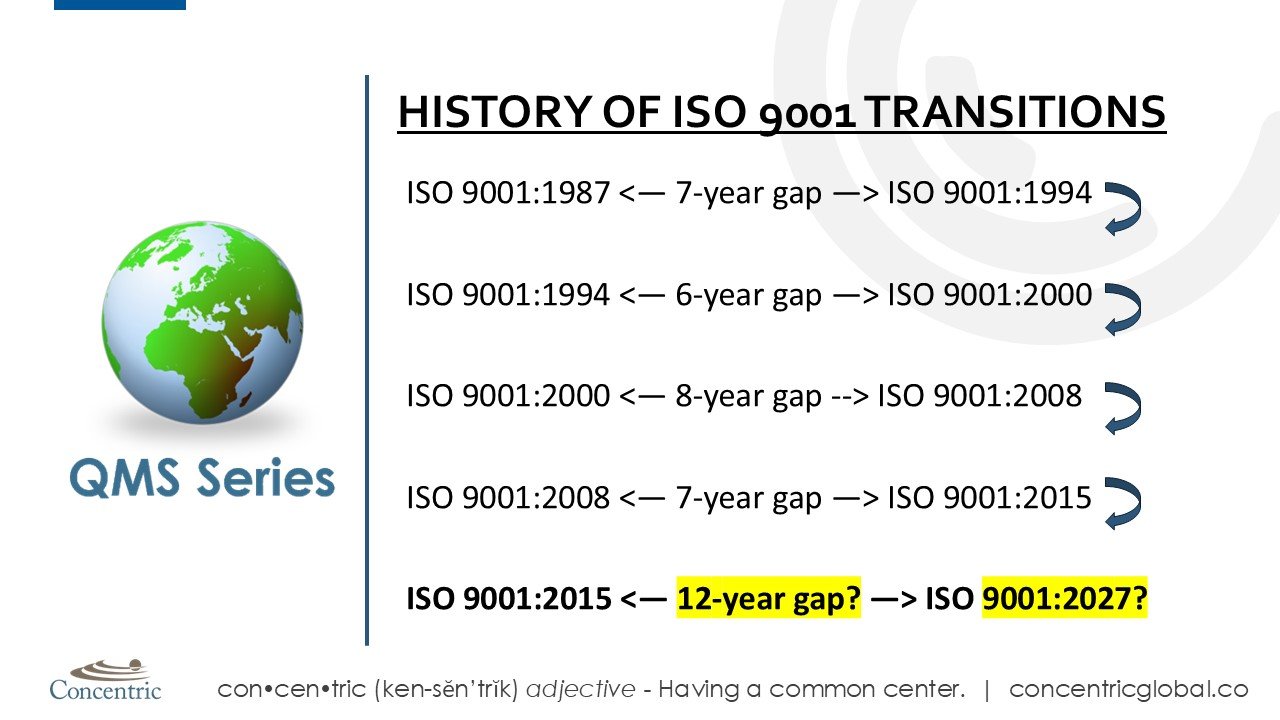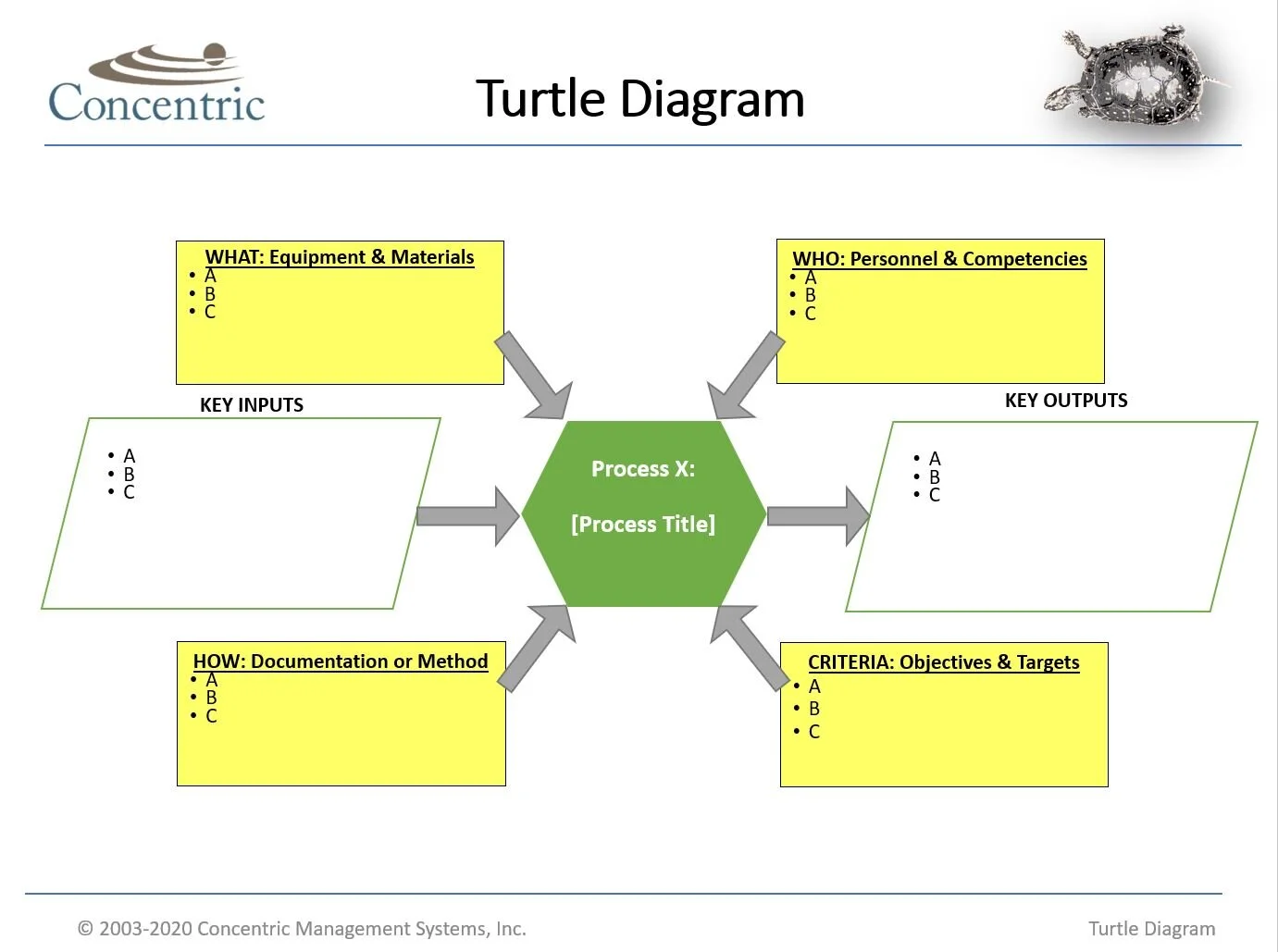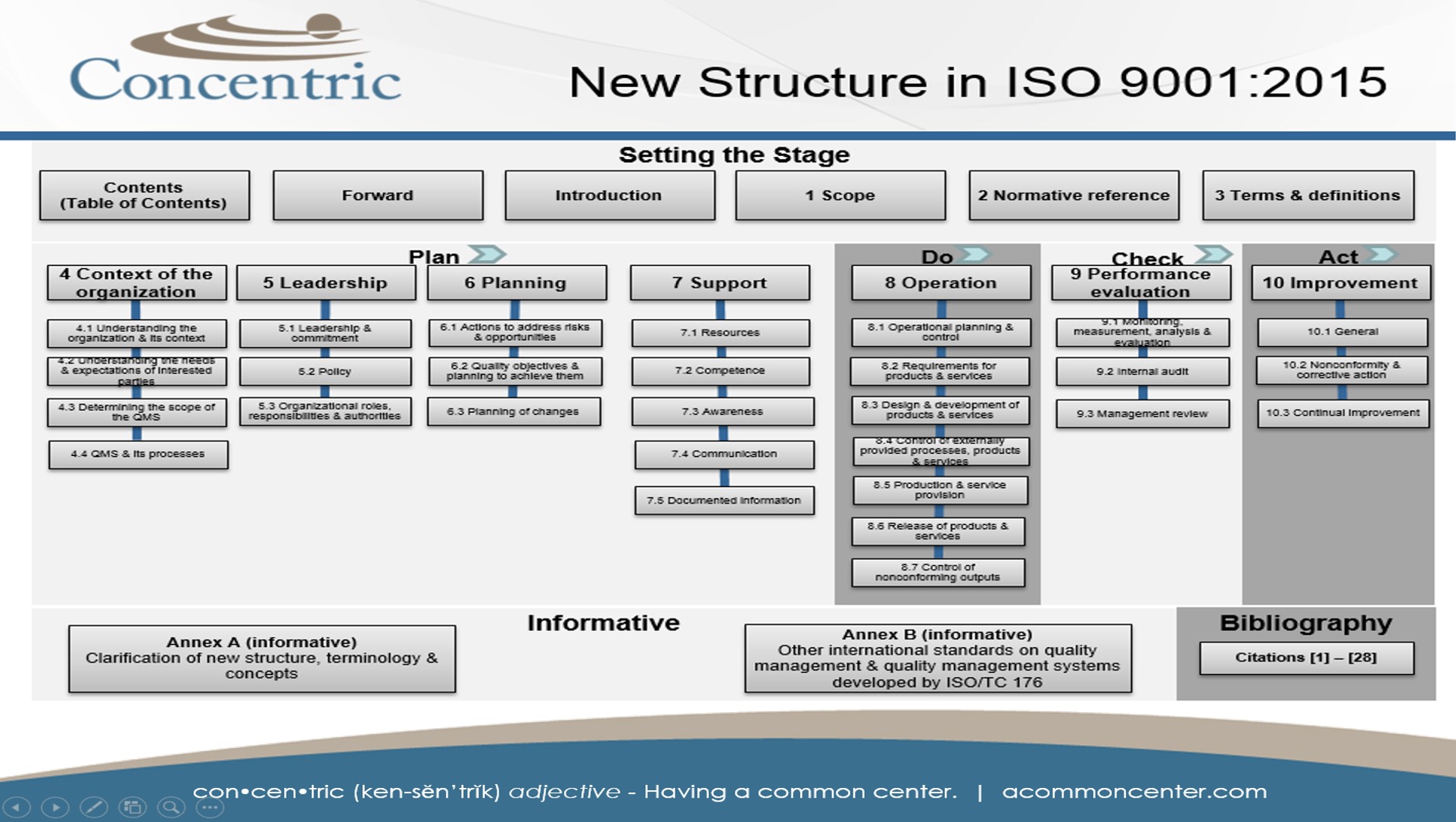The SIPOC diagram stands for Supplier Input Process Output Customer. Like the turtle diagram, the SIPOC is a schematic representation of the elements of a single process - starting with the supplier and ending with the customer.
Read MoreA "Turtle Diagram" is a quality tool used to visually display process characteristics such as inputs, outputs (expectations), criteria (metrics) and other high-level information to assist in the effective execution and improvement of key business processes.
Read MoreCompliance management and continuous improvement does not have to be miserable work. Imagine having a friendly and knowledgeable expert by your side to guide you through your journey. That's what our ongoing support is all about. From the initial stages of formulating how to make your business more systematic, through certification and beyond, you can count on us to support your quest to get to the next level. Regardless of where you are today. And believe it or not, we will likely have a little bit of fun along the way. Seriously.
Read MoreIn the ever-evolving world of education and professional development, online courses have emerged as a powerful tool for personal growth and career advancement. At Concentric Global, we’re proud to present a diverse range of online courses designed to empower individuals with the knowledge and skills necessary to thrive in today's competitive landscape.
Read MoreWho doesn’t love a giveaway? We’ve really gone mad this month and have the giveaway of all giveaways to prove it. Free Exemplar Global Certified ISO 9001:2015 Auditor Training plus a cash bonus for finishing the course in the month of March.
Here’s the deal. We're giving away 64 free seats to our Exemplar Global Certified ISO 9001:2015 Auditor Training online course. That’s a $750 value! To sweeten the pot we’ve decided to give you cash too. That’s a $900 value!
Read MoreThis week, I was sent a request to provide feedback on behalf of a US certification body on my recommendations for the future of ISO 9001:202X. Here is a summary of my comments based on the 3 questions asked:
Read MoreDuring my first 25+ years of working with various organizations and leadership team members, I've noticed that most struggle with the concept of a management systems or processes that make up a system. A mentor of mine once stated "No one wants to build a house. But everyone sure as hell shows up when its time to paint it." I thought that was not only really funny but also similar to building and maintaining management systems.
Read MoreToday, ISO launched their video introduction of the newly published ISO 18091:2019 Quality management systems -- Guidelines for the application of ISO 9001 in local government. Although the ISO 18091 document was originally published in 2014, adoption of ISO 9001 in local government has been slim thus far.
Read More38 Required Records of ISO 9001:2015 (20) and IATF 16949:2016 (18)
Read MoreHere at Concentric, we like change and typically embrace it. However, we are in agreement that several changes to the 2015 release of the ISO 9001 standard are just annoying. Changes that make understanding of the requirements less simple are, well… not simple. One example is the ambiguity associated with how many and what kinds of documented procedures and records are required. Now that the term "documented information" is being used, subscribers have to get out their ibuprofen, highlighters and dig down into the standard looking for clues like the words maintained (document required) and retained (record required). We've decided to create some more user-friendly tools to help you to better understand what's inside this 42-page document.
The following sections may be helpful in better understanding what is required vs. what is optional, for those of us who appreciate simple. All documented information, be it a traditional document or record, must be controlled in accordance with clause 7.5 Documented information. In order to make implementation and auditing simple, we recommend purchasing a printed copy of the standard and highlighting where the terms “maintained” and “retained” exist. The following sections can also be used as a quick reference guide to assist you in locating documentation requirements, examples of documents that may be used “as needed” and matrices to help you map standard references to your own language.
Read MoreIf your answer is YES, which best describes the motivation for this adoption:
- This Standard is your industry’s general practice?
- It is your customer’s request?
- It is a Marketing initiative to improve your competitiveness?
- Or simply because you are ISO 9001:2008 and want to keep the registration?
You may acknowledge one or more of the justifications above as genuine enough in your case. However, your organization’s leadership truly believes that the very first statement of the ISO 9001:2015, clause 0.1 Introduction, is valid, and that’s significantly larger than all the justifications above combined!
“The adoption of a quality management system is a strategic decision for an organization that can help to improve its overall performance and provide a sound basis for sustainable development initiatives”.
The understanding of this Standard’s requirements, recommendations and permissions demonstrates an intuitive and logical rational that concludes that none of the requirements are unhelpful or useless. Indeed, compliance with ISO 9001:2015, means the minimum applied efforts and resources to achieve a better business structure, with more productivity, more competitiveness and, sure, more growth. Let us explain this rational!
Read More



















